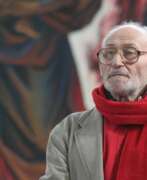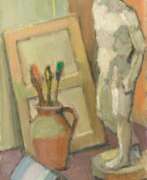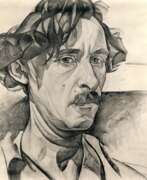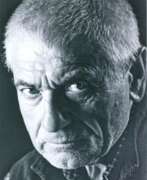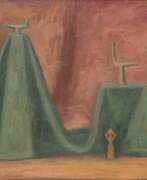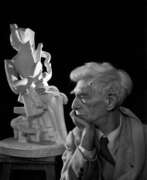Byelorussia Expressionism
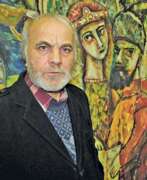

Vladimir Ivanovich Akulov (Russian: Владимир Иванович Акулов) is a Soviet and contemporary Belarusian artist. He is known as a painter, graphic artist and teacher, a representative of the second wave of Belarusian avant-garde.
Vladimir Akulov in his work has developed a unique style under the influence of expressionism, cubism, primitivism, fauvism. He is a master of portrait, landscape, still life, compositions with symbolic and allegorical subjects, illustrations of literary works. During his career the artist created several cycles of portraits, including those of famous people.


Nicolai Cikovsky (Russian: Никола́й Цико́вский) — Russian, later American artist of the XX century. Most of the evidence about the artist is associated with his participation in the creative group Hampton Bays, based on Long Island, New York and which included David Burliuk, John Graham, Milton Avery, brothers Raphael and Moses Sawyer.
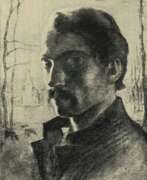

Robert Lvovich Genin (Russian: Роберт Львович Генин) was a Jewish-born artist of the first half of the twentieth century who worked in several countries, including the Russian Empire, Germany, France, Germany, Switzerland, and the USSR. He is known as a painter and graphic artist.
Robert Genin worked in a variety of genres including landscapes, portraits, genre compositions and nudes. He also did lithography, woodcuts and etching. His style evolved from Jugendstil and Symbolism in the early 1900s to Expressionism after the First World War. He later came to a kind of lyrical primitivism. The artist worked in both easel and monumental painting and was influenced by various artists.
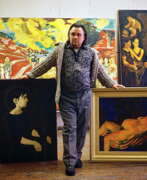

Alexander Mikhailovich Kishchenko (Russian: Александр Михайлович Кищенко) was a Soviet and Belarusian artist of the second half of the twentieth century. He is best known as a muralist painter.
Alexander Kishchenko is considered one of the most famous artists of Belarus of the 20th century, and his works are valuable assets of Belarusian culture. He worked in all genres of easel and monumental decorative painting and created hundreds of works during his career, including philosophical paintings and portraits. The artist was also proficient in mosaics, ceramics and tapestry.
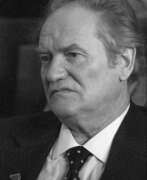

Yevsey Yevseyevich Moiseyenko (Russian: Евсе́й Евсе́евич Моисе́енко) was a distinguished Soviet and Russian artist, born in 1916 in Uvarovichi, near Gomel, then part of the Russian Empire. His early interest in art led him to enroll at the Moscow Industrial Art College in 1931, laying the foundation for a prolific career in painting. Moiseyenko's journey continued at the Repin Institute of Painting, Sculpture and Architecture, where he studied under notable instructors, including Alexander Osmerkin. His experiences during World War II, including his time as a prisoner of war, deeply influenced his thematic focus on heroic battles and the resilience of the Soviet people during wartime.
Moiseyenko's work is renowned for its emotional depth and expressive style, particularly visible in his series "The Years of Fighting," which reflects on World War II. His paintings, such as "Red Came," "Mother, Sister," and "Yesenin with his Grandfather," showcase a transition from Soviet Realism to a more abstract and emotionally charged approach. This evolution in style, coupled with his use of vivid colors and dynamic compositions, solidified his reputation as a leading figure in Soviet art. Moiseyenko's contributions to art were recognized with numerous awards, including the title of People's Artist of the USSR and the Lenin Prize.
His artworks, rich with historical and cultural references, are held in high esteem and can be found in major Russian museums, including the State Russian Museum and the Tretyakov Gallery. Moiseyenko's legacy extends beyond his paintings; as a professor at the Repin Institute, he influenced generations of artists, sharing his vision and understanding of art's power to express the human condition.
For collectors and experts in art and antiques, Moiseyenko's work represents a pivotal intersection of Soviet history, personal narrative, and artistic evolution. His ability to capture the essence of Soviet life and the spirit of its people during times of turmoil and peace alike offers a profound perspective on the 20th century.
To stay updated on new discoveries, sales, and auction events related to Yevsey Yevseyevich Moiseyenko's work, signing up for updates is highly recommended. This ensures access to the latest information and opportunities to acquire pieces by this eminent artist, whose work continues to inspire and captivate audiences around the world.
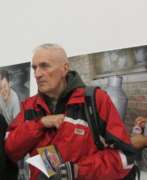

Alexander Ivanovich Rodin (Russian: Александр Иванович Родин) was a Soviet and Belarusian artist of the late twentieth and early twenty-first centuries. He is known as a painter, graphic artist and avant-garde artist.
Alexander Rodin is considered a master of experimental painting and performance art. He is the author of futuristic paintings and landscapes. Surrealistic manner of performance, detailing of subjects, combination of abstract thinking and imagery were characteristic of the artist's work.
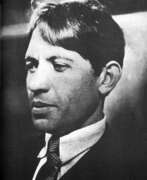

Chaïm Soutine (Russian: Хаим Соломонович Сутин), a Russian-born French painter, left an indelible mark on the world of art with his expressionist works that radiate emotional intensity and bold coloration. Born in 1893 in a small village in what is now Belarus, Soutine grew up in a Jewish family, the tenth of eleven children. His journey to Paris marked the beginning of a significant chapter in his life, where he would eventually become a central figure in the School of Paris, a movement that defined the city's artistic landscape in the early 20th century.
Soutine's artistry is characterized by its raw emotional power, often conveyed through distorted forms and vigorous brushwork. This unique style reflects not only his personal struggles and the hardships he faced as an immigrant artist but also his deep admiration for the Old Masters, particularly Rembrandt, whose influence is evident in Soutine's thematic choices and technique. His work spans a range of subjects, from landscapes and portraits to still lifes, each imbued with a sense of vitality and movement that is distinctly Soutine's.
One of the most compelling aspects of Soutine's oeuvre is his series of carcass paintings, notably inspired by Rembrandt's "Slaughtered Ox." These works, particularly "Carcass of Beef," showcase his fascination with the theme of decay and the beauty he found within it, despite the controversy such subjects provoked among his contemporaries. This series exemplifies Soutine's ability to transform a potentially repulsive subject into a profound exploration of color and form.
Soutine's legacy is also marked by his tumultuous life, including his struggles with poverty and persecution during World War II due to his Jewish heritage. Despite these challenges, his work gained recognition and support from influential art dealers and collectors, such as Albert C. Barnes, who purchased a significant number of his paintings in a single encounter, providing Soutine with financial stability and public exposure.
Today, Soutine's works are celebrated in major museums and galleries around the world, testament to his enduring influence on subsequent generations of artists. His paintings, characterized by their emotional depth and innovative use of color and form, continue to captivate art lovers and collectors alike.
For those passionate about the evolution of modern art and the expressionist movement, Soutine's work offers a window into the soul of an artist who transformed personal adversity into profound artistic expression. To stay informed about upcoming sales and auction events featuring Soutine's work, I encourage you to sign up for updates. This subscription is an opportunity to deepen your appreciation for Soutine's contributions to art and culture and to possibly acquire a piece of his legacy for your collection.
